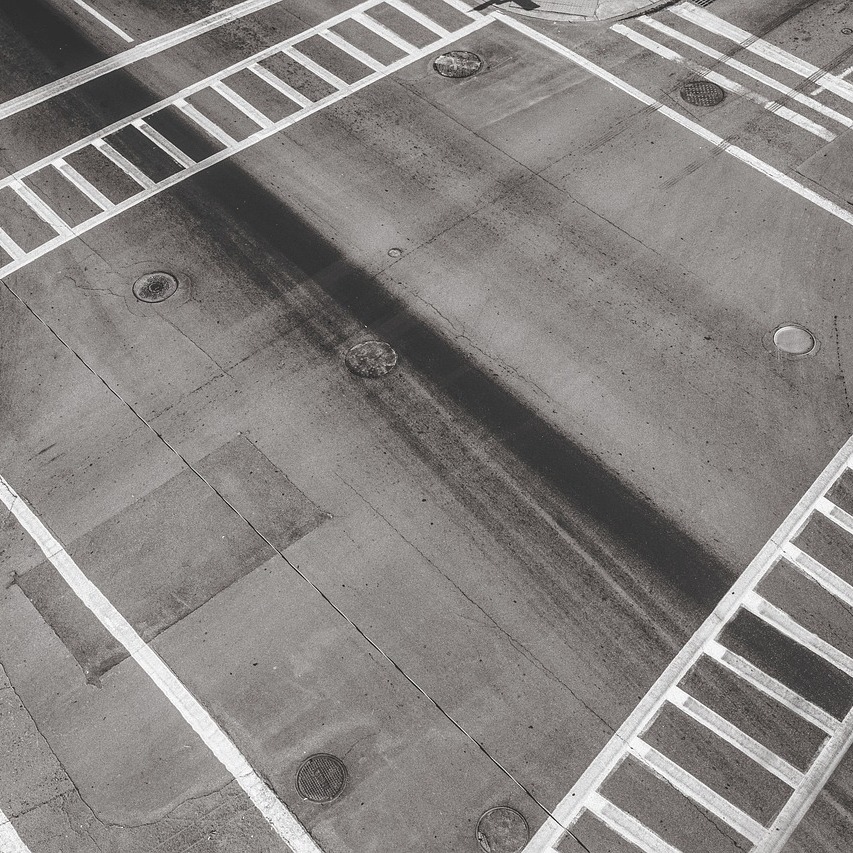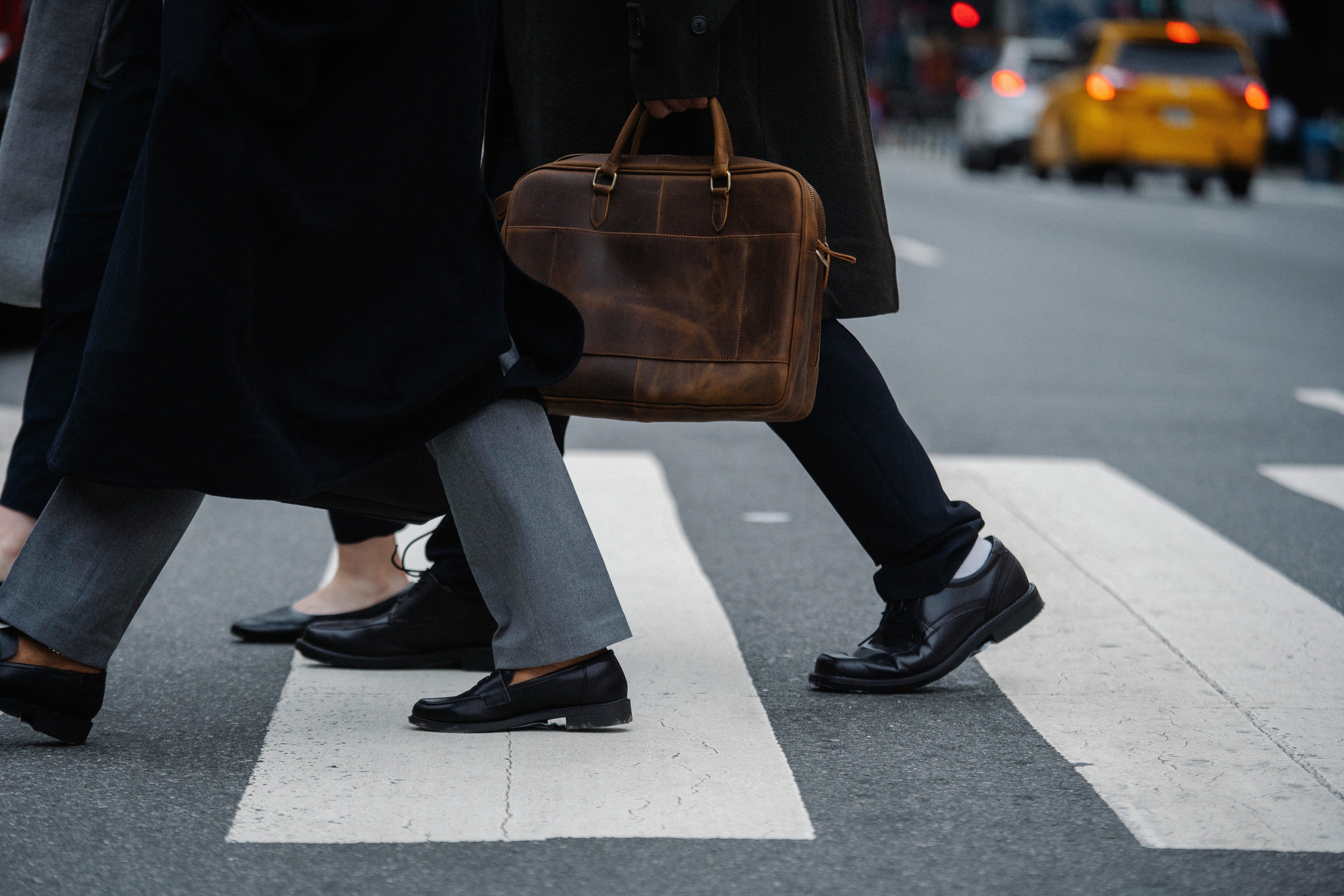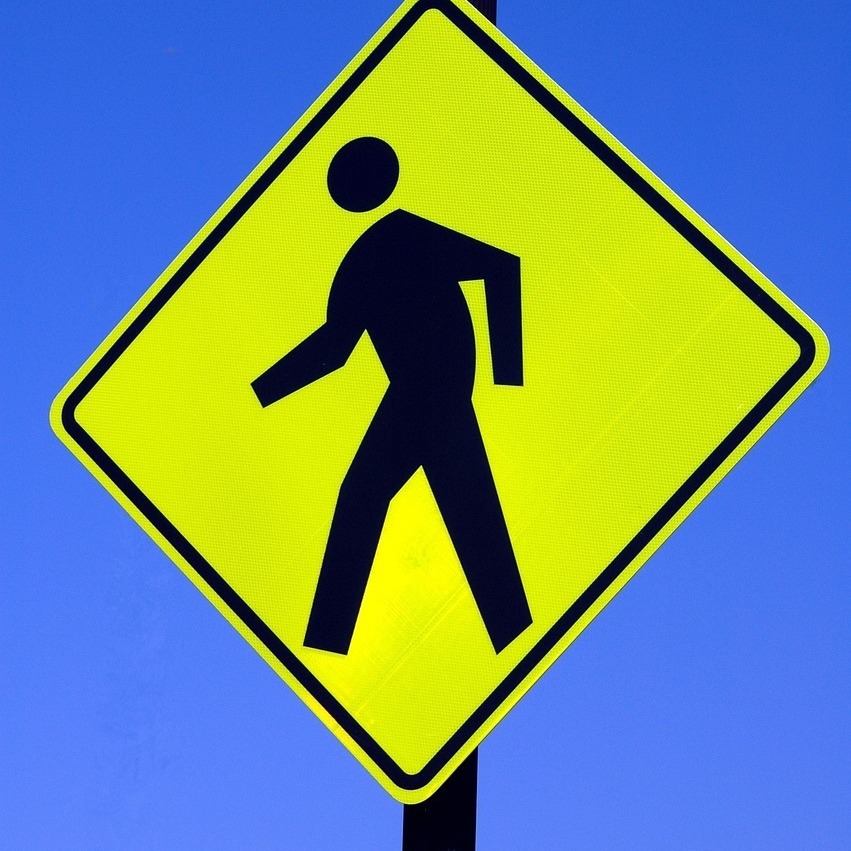Let's imagine our streets as arteries and veins, pulsating with cars - our modern lifeblood. Pedestrians navigate their way through traffic like red blood cells. In order to ensure these elements coexist without friction, we need some structure, some order. Enter crosswalks, the lifelines that ensure pedestrians are safe in the midst of urban movement.
Understanding the Importance of Crosswalks
Crosswalk safety means allowing people of all ages and abilities to move freely and safely in public spaces. It's about fostering an environment that respects everyone's right to use public spaces without fear. In 2021, there were 7,388 pedestrian fatalities in the US and more than 60,000 pedestrians were injured nationwide. This number has increased to the highest number in 40 years, and pedestrian fatalities now account for 17 percent of all crash fatalities. That's why it's important to look both ways before crossing the street, or you might just end up a statistic!

The Crosswalk: More than Just a Painted Stripe
What do you see when you look at a crosswalk? Some people see a few painted stripes, but there's much more to it than that.
Crosswalks signify a place of safety, where drivers and pedestrians can share the road with respect and caution. They remind us to be mindful of our fellow citizens and to be mindful of our actions when behind the wheel or walking on the sidewalk.
Anatomy of a Crosswalk
Almost all intersections have pedestrian crossings, whether painted or not. Marked crosswalks are highly visible, delineated with wide white stripes, also called "zebra crossings." Unmarked crosswalks exist at almost every intersection, regardless of whether they are painted. Even if they are not marked, drivers must still yield to pedestrians in these areas. Pedestrians should take extra care when navigating unmarked crosswalks.
Design and Location
The design and location of crosswalks also play an important role in pedestrian safety. Crosswalks should be flat and wide to accommodate wheelchairs, strollers, and larger groups. In order to maximize their benefit, they are often located near bus stops, schools, and other public gathering places.
Crosswalk Rules and Regulations: The Driver's Responsibility
The driver should remain vigilant at all times, especially near crosswalks. It is a legal requirement to stop when a pedestrian is in a crosswalk. This includes unmarked crosswalks at intersections. Drivers must be extra cautious when approaching intersections, as pedestrians may be crossing even when there is no marked crosswalk. Pedestrians also have the right of way in a crosswalk and should be given ample time to cross safely.

Crosswalk Etiquette: The Pedestrian's Responsibility
Also, pedestrians have an important role to play when crossing crosswalks: crossing only at designated crosswalks, waiting for the walk signal, making eye contact with drivers, and remaining alert. This is important because drivers may not always be paying attention to pedestrians, and pedestrians should not put themselves at risk by crossing in dangerous locations. It is most important to make eye contact with drivers to ensure that they are aware of the pedestrian's presence.
Finally, it is crucial to remain alert and be aware of one's surroundings at all times.

Crosswalk Safety for Children
Providing children with explicit instructions for navigating crosswalks safely can go a long way in ensuring their safety on the road. Children can be taught about traffic signals, how to look left and right before crossing, and what it means to not dart into the street without looking first. They can also be taught to use the sidewalk, stay as far away from the street as possible, and never walk alone. Additionally, children should be reminded to always be aware of their surroundings and to report any suspicious or dangerous activities to an adult.
Crosswalks at Night: Ensuring Visibility After Dark
It is even more crucial for pedestrians to be aware of their surroundings in crosswalks. Visibility decreases at night, and accidents increase. Reflective clothing, flashlights, and extreme caution should be taken when crossing the street at night.

Emerging Technologies in Crosswalks
In this age of rapid technological advancement, crosswalk safety is getting a tech makeover.
Intelligent Traffic Systems
A type of intelligent traffic system uses artificial intelligence and machine learning to adjust traffic signals in real-time based on the flow of traffic around the crosswalk, improving safety at crosswalks. This system also helps to reduce traffic congestion and ensure that vehicles and pedestrians are able to cross the street safely and efficiently. It is an effective way to reduce traffic accidents and improve overall traffic flow.
Smartphone Applications
A variety of apps are now available to alert drivers to upcoming crosswalks and pedestrians, adding an additional layer of safety. The apps use GPS and other sensors to detect when a pedestrian is in a crosswalk, and alerts the driver to take caution. With the increased usage of these apps, pedestrian fatalities have decreased significantly.
Promoting Crosswalk Safety: A Community's Role
A community's role in the safety of crosswalks can be significant.
By organizing awareness campaigns, promoting safer crosswalk designs, and ensuring everyone follows safety rules, a community can make a substantial contribution to crosswalk safety. For instance, a city may host a pedestrian safety event that includes crossing guards, police officers, and volunteers providing instruction on proper procedures for crossing a street.

A Common Misconception
There is a common misconception that crosswalks are the most safest place to cross a street. However, overall safety depends on both drivers and pedestrians respecting each other's rights and respecting the rules of the road. Pedestrians should always check for oncoming traffic before crossing the street, regardless of whether there is a crosswalk or not. Drivers should also be aware of pedestrians and always drive with caution in areas with frequent pedestrian activity. Finally, both drivers and pedestrians should be mindful of traffic laws and regulations.
FAQs
- How can I contribute to crosswalk safety? Being aware of your surroundings, following the rules, and promoting safe practices in your community can significantly enhance crosswalk safety.
- Are unmarked crosswalks legal to cross? Yes, unmarked crosswalks at intersections are legal to cross.Both drivers and pedestrians should treat them like regular crosswalks.
- What emerging technologies are being used in crosswalk safety? Intelligent Traffic Systems and smartphone applications are being increasingly used to enhance crosswalk safety.
- Why is crosswalk safety important? Crosswalk safety is crucial to prevent accidents and promote a culture of mutual respect between drivers and pedestrians.
- What is the proper crosswalk etiquette for pedestrians? Pedestrians should cross only at designated crosswalks, wait for the walk signal, make eye contact with drivers, and remain alert at all times.
- What are the responsibilities of drivers regarding crosswalk safety? Drivers must remain vigilant near crosswalks, respect traffic signals, and always stop for pedestrians crossing the road.

Final Thoughts
Creating safe, accessible, and accessible crosswalks isn't just a matter of rules and regulations; it's a matter of life and death. It takes all of us working together to achieve this. So the next time you approach a crosswalk, remember that your actions can save a life.
 Add Row
Add Row  Add
Add 




Write A Comment